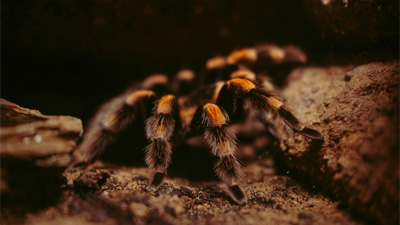The Price of Cobalt Blue Tarantula in the US ($50 to $200)

Photo by Flamesbane on Wikipedia
The Cobalt Blue Tarantula is a beautiful and intriguing arachnid that has its origins in the dense forests of India and Southeast Asia. Its striking, shimmering blue color and aggressive personality make it an extremely popular choice among tarantula enthusiasts, especially in the United States.
This article will provide an overview of Cobalt Blue Tarantula pricing, availability, and other relevant information for people looking to add one of these striking spiders to their collections.
Pricing
The price of Cobalt Blue Tarantulas varies from state to state and among individual breeders, but on average, they can range from $50 to $200 per spider. This price is relatively high compared to other tarantula species due to their scarcity and popularity.
Factors Affecting Price
Several factors can affect the pricing of Cobalt Blue Tarantulas. Some of the major ones include:
Age - the younger the spider, the less expensive it is likely to be.
Gender - Female Cobalt Blue Tarantulas cost significantly more than males because they are in higher demand. Female tarantulas are typically larger and can lay eggs, which means that they can be used for breeding purposes.
Size - The size of the spider does not typically affect its price as much as other factors, but larger tarantulas can fetch a higher price based on their rarity.
Source - Where the tarantula is purchased can have an impact on its price. Pet stores generally charge slightly more than breeders, and online marketplaces like Craigslist or eBay user listings can vary even more widely in price.
Availability
Cobalt Blue Tarantulas are actually quite rare in the wild, but are heavily bred in captivity, which is where most people purchase them from. Breeders who specialize in tarantulas are scattered throughout the United States and can often be found through a quick online search.
When it comes to availability, keep in mind that these spiders can be seasonal, meaning that the quantity available for purchase can vary significantly depending on the time of year.
Why Are Cobalt Blue Tarantulas So Popular?
The Cobalt Blue Tarantula's striking blue coloration is one of the primary reasons why it is so popular. The iridescent blue-violet hue is highly rare among tarantula species, and choosing one is often seen as an indication of a tarantula enthusiast's level of expertise and willingness to take on a more experienced pet.
These tarantulas are also known to be quite aggressive, making them an attractive choice for keepers looking for a more interactive and unique pet. Additionally, most Cobalt Blue Tarantulas are low maintenance and do not require a lot of special care, making them an ideal choice for new tarantula keepers.
Care and Feeding
Cobalt Blue Tarantulas are considered low-maintenance pets and are typically easy to care for in captivity. It is important to keep the spider in a temperature- and humidity-controlled environment, preferably at 75 to 80 degrees Fahrenheit and about 50% humidity.
In terms of feeding, Cobalt Blue Tarantulas typically eat live insects like crickets or roaches, with juveniles needing feeding twice a week and adults just once a week or every two weeks. Overfeeding can lead to obesity and other health problems, so it is essential to feed them in moderation.
It is also important to note that Cobalt Blue Tarantulas are highly venomous and should be handled with caution. One should always wear gloves when interacting with these spiders and avoid handling them unless necessary.
Conclusion
In conclusion, Cobalt Blue Tarantulas are a fascinating and beautiful pet that is highly sought-after among tarantula enthusiasts in the United States. The availability of these spiders has made them relatively easy to find for purchase, but their rarity has also made them relatively expensive. Those interested in adding these spiders to their collection should keep in mind that they are venomous and should be handled with care. Overall, the Cobalt Blue Tarantula is an excellent choice for those looking for a low-maintenance, yet captivating pet.
You May Also Like
 Other Pets50 Popular Names for Tarantulas (with Meaing)
Other Pets50 Popular Names for Tarantulas (with Meaing) Other PetsAre Cobalt Blue Tarantulas Suitable for Beginners?
Other PetsAre Cobalt Blue Tarantulas Suitable for Beginners? Other Pets6 Best Tarantula Species for Beginners
Other Pets6 Best Tarantula Species for Beginners Other PetsWhat Happens if a Cobalt Blue Tarantula Bites You?
Other PetsWhat Happens if a Cobalt Blue Tarantula Bites You? Other PetsWhat Happens if a Pink Toe Tarantula Bites You?
Other PetsWhat Happens if a Pink Toe Tarantula Bites You? Other PetsWhat Happens if a Rose Hair Tarantula Bites You?
Other PetsWhat Happens if a Rose Hair Tarantula Bites You?